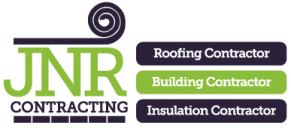Roof inspections are an essential part of building maintenance, as they help identify potential issues before they become major problems. However, traditional roof inspections have their limitations, which can compromise accuracy and precision. Aerial roof inspections, on the other hand, offer a new level of accuracy and detail that can help building owners and managers make informed decisions about their roof maintenance needs.
Traditional Roof Inspections: Limitations and Drawbacks
Traditionally, roof inspections are performed by trained professionals who climb onto the roof and inspect it manually. This method can be effective, but it has limitations. For instance, it’s challenging to get a comprehensive view of the roof’s condition, as the inspector can only inspect one area at a time. In addition, the inspector’s safety is at risk since they need to climb ladders or use other equipment to access the roof.
Moreover, standard roof inspections often rely on human judgment and experience. While experienced inspectors can detect signs of damage and wear, they may miss some of the subtle signs that a drone could capture in high resolution.
Aerial Roof Inspections: Benefits and Advantages
Aerial roof inspections involve the use of drones or other aerial technology to capture high-resolution images and videos of the roof’s condition. This method offers several benefits compared to traditional roof inspections.
Firstly, aerial roof inspections provide a comprehensive view of the roof’s condition, which can help identify issues that may be missed during a standard inspection. Aerial inspections can also cover large areas quickly and accurately, allowing the inspector to detect damage in hard-to-reach or inaccessible areas.
Secondly, aerial inspections eliminate the safety risks associated with traditional roof inspections. Rather than putting an inspector in harm’s way, aerial inspections can be carried out remotely from the ground, keeping the operator safe.
Finally, aerial roof inspections can provide a more objective assessment of the roof’s condition, removing the human element and relying solely on the technology.
The Role of Technology in Aerial Roof Inspections
Aerial roof inspections rely on high-tech drones equipped with sophisticated cameras and sensors. These drones are capable of capturing high-resolution images and videos of the roof’s condition, which can be analyzed and assessed remotely.
Additionally, these drones are equipped with GPS systems and other location-based tools that allow them to create detailed maps and 3D models of the roof. This level of detail can help identify issues that might otherwise go unnoticed, such as cracks, leaks, and other damage.
Comparison: Accuracy and Precision of Aerial vs Standard Inspections
Compared to standard roof inspections, aerial inspections offer a higher level of accuracy and precision. Aerial inspections provide a more comprehensive view of the roof, allowing inspectors to detect issues that might otherwise be missed.
Aerial inspections can also provide more detailed and precise data about the roof’s condition. With high-resolution images and videos, inspectors can identify even the smallest signs of damage, which can help prevent minor issues from becoming major problems.
Cost Considerations: Aerial vs Standard Roof Inspections
Aerial roof inspections can be more expensive than standard inspections due to the cost of the technology and equipment required. However, the cost can be offset by the increased accuracy and precision of the inspections, which can help prevent more costly damage in the long run.
Case Studies: Real-World Examples of Aerial and Standard Inspections
Several real-world examples have shown the benefits of aerial roof inspections. For example, in one case, a building owner discovered water damage and leaks on their flat roof that went undetected during a standard inspection. An aerial inspection identified the issues, which were promptly repaired, saving the owner thousands of pounds in repairs.
Conclusion
In conclusion, aerial roof inspections are a valuable tool for maximizing inspection accuracy, efficiency, safety, and cost-effectiveness. With the latest technology and equipment, it is a more reliable and efficient method of inspecting roofs. With the ability to detect and identify roof damage early, it can help prevent costly repairs and ensure the safety of workers and building occupants. Contact JNR Projects today to learn more about how we can help you with your aerial roof inspection needs in Bradford and West Yorkshire.
